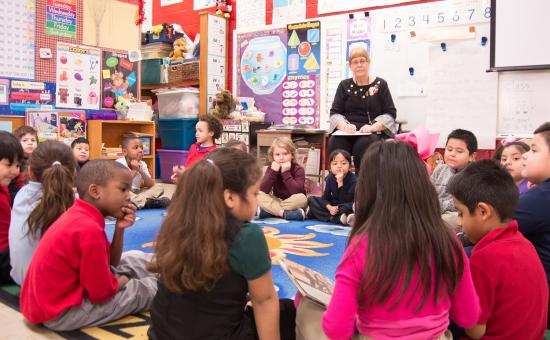Strengthening Educator and Student Safety
- Expand teacher collective bargaining rights to ensure educators have a voice in decisions affecting teaching, working conditions and school environments.
- Strengthen reporting and accountability requirements for violence against teachers and other school employees so incidents are accurately documented and addressed.
- Establish clear, consistent cell phone policies that support student learning while giving educators a voice in implementation.
- Create responsible guardrails for the use of artificial intelligence in schools that protect student privacy, promote transparency and support effective teaching.
- Improve implementation of science of reading and math instruction requirements by ensuring professional development is accessible, flexible and provided at no cost to educators.
- Fix the Teacher Appreciation Grant (TAG) so it is fair, collaborative and supports educator morale, rather than pitting teachers against one another.
- Reestablish a Teacher Pay Advisory Board to develop long-term, statewide recommendations to raise teacher pay to at least the national average.
Improving Classroom Conditions and Student Learning
- Establish clear, consistent cell phone policies that support student learning while giving educators a voice in implementation.
- Create responsible guardrails for the use of artificial intelligence in schools that protect student privacy, promote transparency and support effective teaching.
- Improve implementation of science of reading and math instruction requirements by ensuring professional development is accessible, flexible and provided at no cost to educators.
Fixing TAG and Supporting Fair Educator Pay
- Fix the Teacher Appreciation Grant (TAG) so it is fair, collaborative and supports educator morale, rather than pitting teachers against one another.
- Reestablish a Teacher Pay Advisory Board to develop long-term, statewide recommendations to raise teacher pay to at least the national average.
Protecting and Strengthening Public School Funding
- Increase public school funding in the second year of the biennium to address inflation and keep pace with student needs.
- Restore local school funding impacted by recent property tax changes and ensure replacement revenues are identified.
- Address excessive school district cash and rainy day fund balances by allowing educators to bargain the use of funds held beyond prudent reserve levels, so dollars intended for classrooms are used as intended.
Supporting Education Professionals and Retirees
- Extend Family and Medical Leave Act protections to education support professionals who work at least 120 days in a school year.
- Update outdated school bus speed restrictions to improve safety for drivers and students.
- Provide a second-year 13th check for retired public school employees to help offset inflation.
- Improve accessibility at the Statehouse to ensure full participation by educators and the public.
Ensuring Voter Voice in School Boards
- Support school governance models that retain a fully elected school board.
Click for printable version of priorities.
